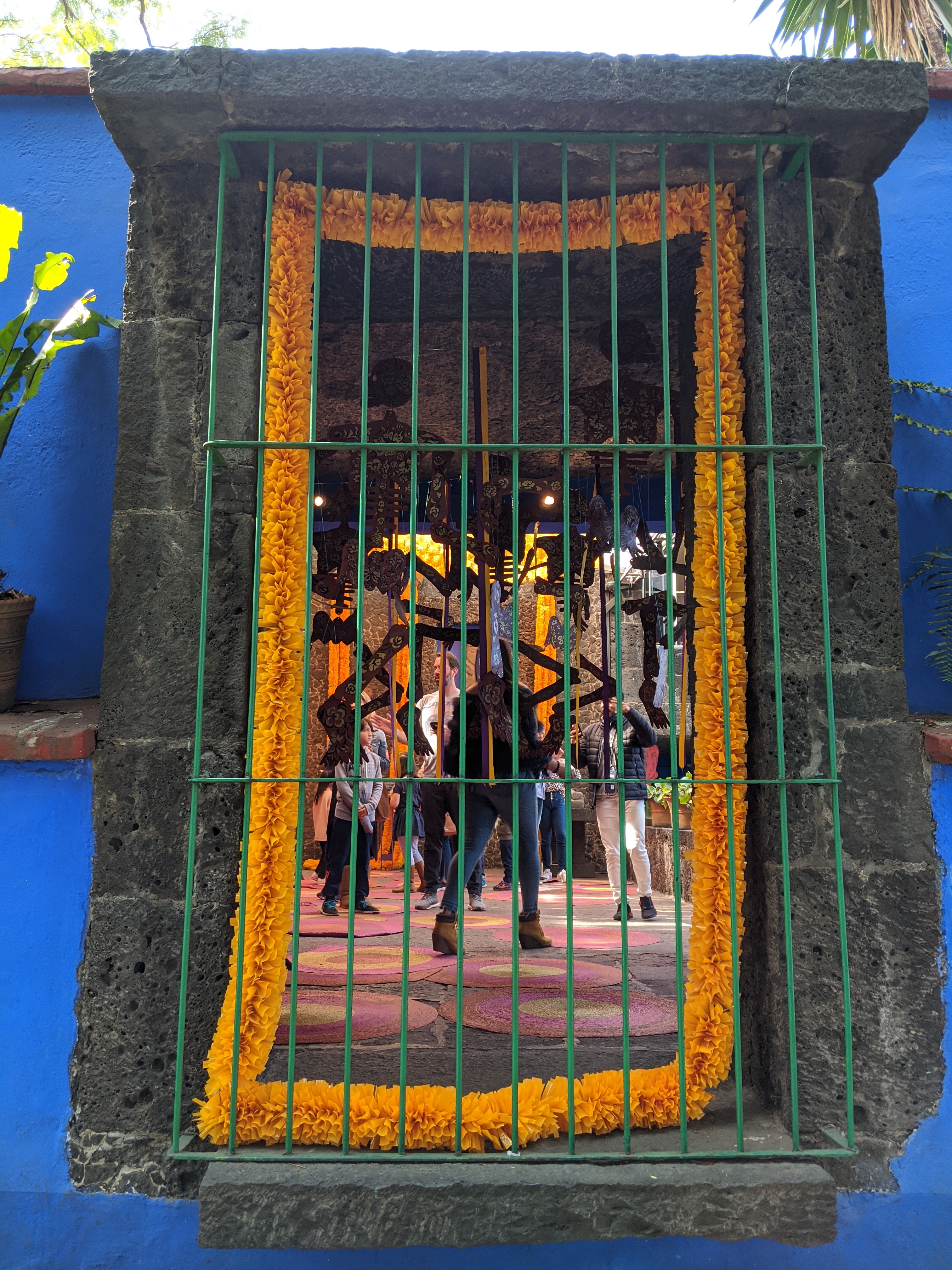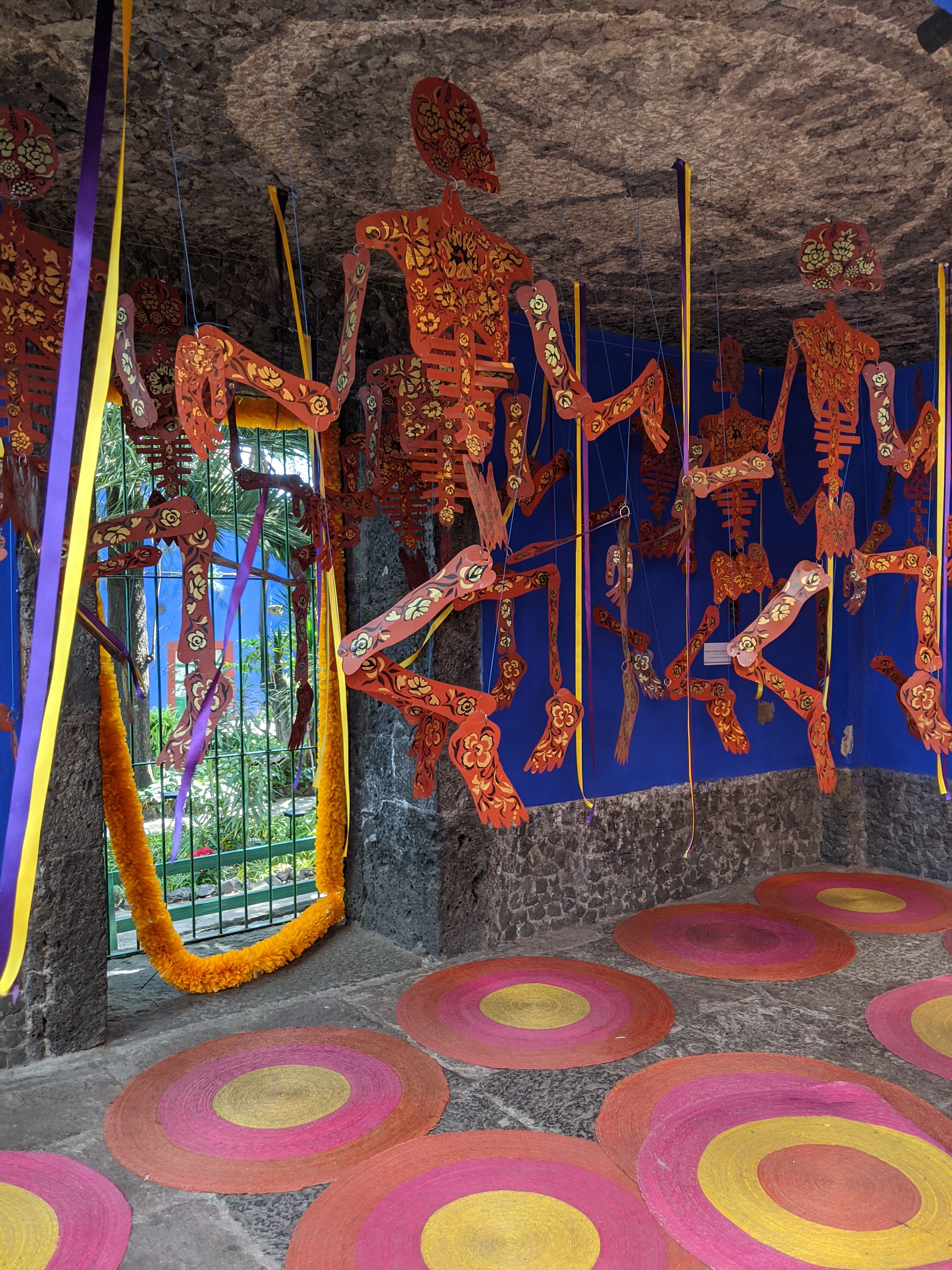My initial vision for this multi-sensory project was to design a virtual space with complimentary sounds of nature and animals as a way to recreate the physical space that inspired Frida Kahlo’s work. While the central idea remained steadfast throughout the design process, I was able to extend my vision to pivot from being a strictly literal representation to a piece on reflection.
Research
Frida Kahlo is one of the most celebrated female Mexican artist of the 20th century. Even 70 years after her death, her work continues to be shown across the globe. This impact is striking and a metaphor for the power of art to achieve long-lasting impact and sustained inspiration. I thought about how her aesthetics are so distinguishable across the various subjects she painted, particularly her numerous self-portraits and still life work. When I visited La Casa Azul, now known as the Frida Kahlo Museum in CDMX on January 2019, I was able to explore the intimate space that undoubtedly inspired the artist and her work. Attached are a few photos.






These colors, while reguarly maintained and repainted across the museum, have not changes since Kahlo and Diego Rivera passed on. This led me to research other works of the artist that feature similar or exact hues. I found an abundance of examples where hues and aesthetics come close if not exact to much of the iconic palette found throughout the home.




The connection between the physical space she lived and painted in and the art she produced felt really strong. I was particularly draw to her painting titled “Viva La Vida” for its simple yet striking composition. It was more subtle compared to her other still life paintings but key colors of green, yellow, blue and red and brown are present. As I researched more I found out this is the last painting she completed, just days before her death.
Revisiting Concept
This was an “AHA” moment for me. I thought about how I can build a connection between space and art/aesthetics of the artist. I re-imagined my animation not as a still gaze across the garden, but as a 360 degree movement around a recreated “Viva La Vida” still life sculpture.
The idea was feasible and it also felt appropriate as per assignment instructions. I am often hesistant about recreating things with deeply cultural significance beyond my lived experiences or outside my own identity as we are often unable to credit things like indigenous /prehispanic/precolonial artwork. More research has taught me that watermelons are associated with Día de los Muertos and Viva la Vida was a commentary on her failing health, illustrating the dualism that is often present in Kahlo’s work.
Proccess
I rapidly fabricated the garden ground, enclosing courtyard walls, central windows/doors, center pyramid and stairs. We always have tropical fruit around my home and by coincidence my S/O ordered a watermelon with our groceries this week, I had all the things I needed to create materals and textures.

I also sourced trees from a free pack available online. The numerous trees seen in the clip, and a photoshopped image of the note that Frida and Diego lived here were perhaps the only prefabricated items in the frame (along with the grass, created via the grow grass option).
After exporting a few frames, I went to work to rig the camera along a spline to create a 360 degree shot of the courtyard. This camera movement is critical to the communications process and creative intent. The camera loops around the yard moving up and down, finally parking where it originally began and intentionally framed with both the image “Friday y Diego vivieron en estas casa…” and the still life sculpture of “Viva la Vida” on bold display in the center of the space.
Adding Sound
I also feel more confident using Ableton Live. Having profound hearing loss put me in an uncomfortabe position producing audio. But I embraced this discomfort to create a sonic composition. Since complex music was a no-go for me, I instead focused on creating an environmental ambiance. I used the drum rack to rig up animal and ambience sounds, and then composed an audio loop to combine with C4D renders. This worked really well in my opinion.
ExportinG
This project will continue to grow and be exported preiodically as textures, design and other elements are updated. Below is the latest.
Future Work/Iteration
Some thoughts in my head as think about reiterating this experience for other artists:
“Am I creating a new story or imparting important knowledge about the artist through this medium?”
“Is this educational or entertainment or both?”
“Has this been done before?”
“Can a series built around this concept contribute to decolonization of art by removing it from museum and gallery space and surrounding it by representations of its space of origin?
I’m excited to use my upcoming “free” time to explore these questions more, for now, I don’t really have the answers.

